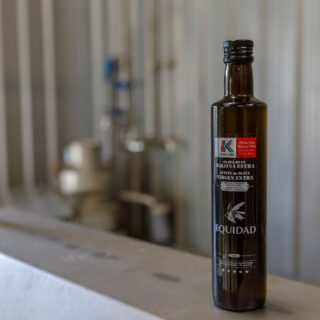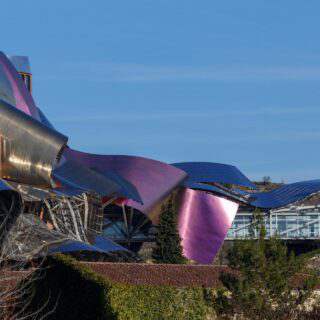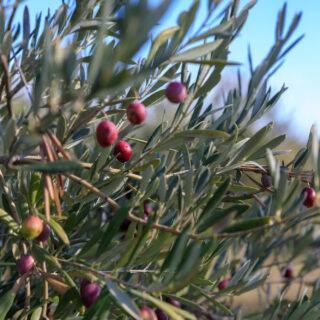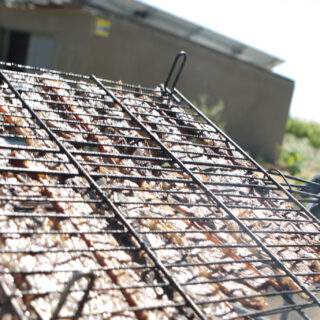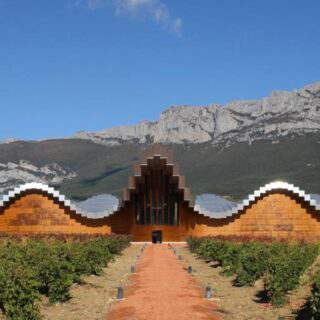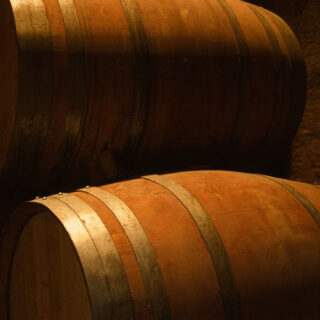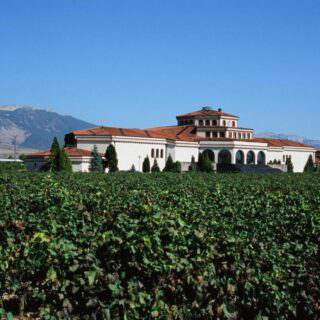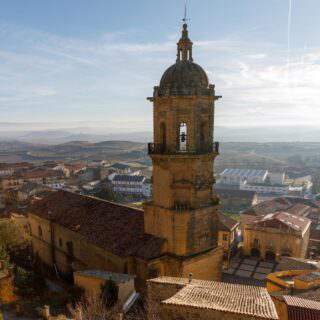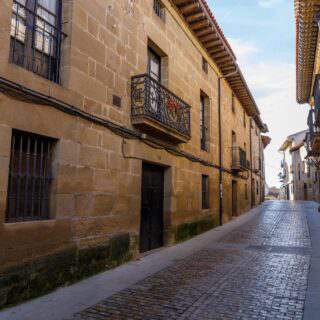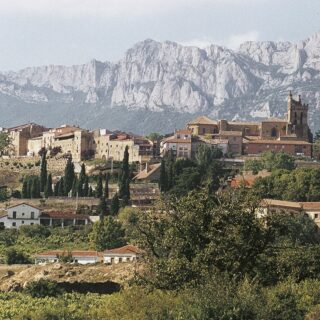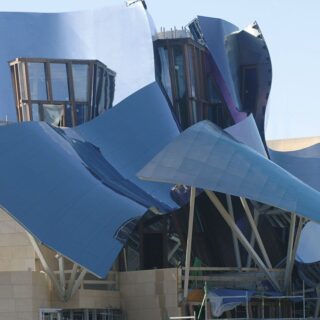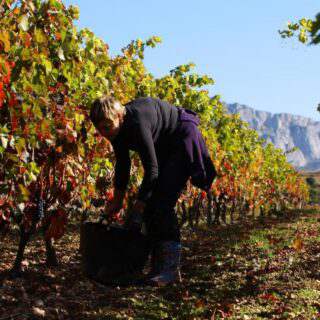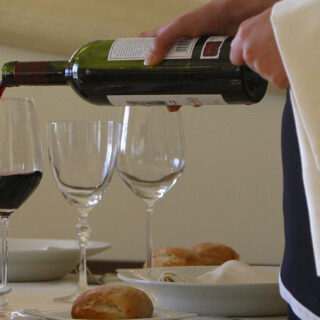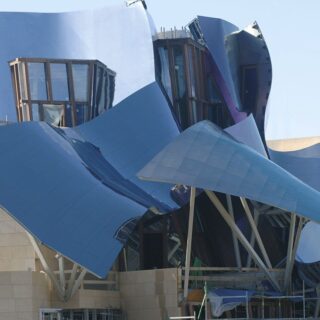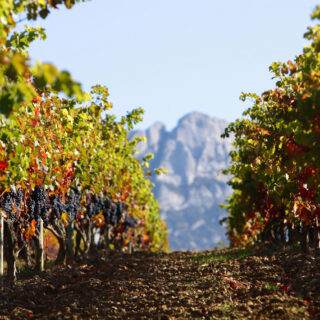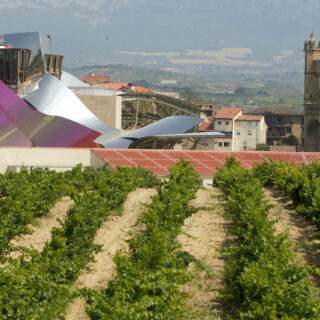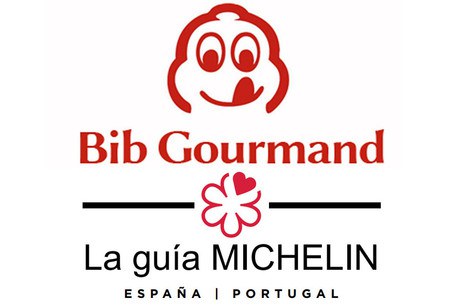Rioja Alavesa is a district with its own character, one that is original and different. 23 towns and villages traditionally linked to wine culture, still conserving all the charm of the medieval settlements erected among the vineyards.
This is evidenced by the fact that this area boasts 13,500 hectares of vineyards and almost 400 wineries with an annual production of around 100 million bottles of wine, under the control of the Regulatory Board of the Rioja Qualified Designation of Origin. Impressive!
This area is also dotted with prehistoric remains of great interest, walled towns, ancestral homes, unique landscapes; a whole heritage that demonstrates that its inhabitants have profitably settled in this generous land.
Wine and also oil
A visit to Rioja Alavesa will allow you to sample some very different wines. Ranging from wines made in medieval caves right up to wines produced in the most avant-garde facilities of our time.
Extra virgin olive oil, with its own special flavour resulting from the interaction of the olive trees and the region, is another star product. The Arroniz variety is native to Rioja Alavesa, providing an oil that is exceptional and balanced, with bitter and pungent attributes, making it unique and inimitable.
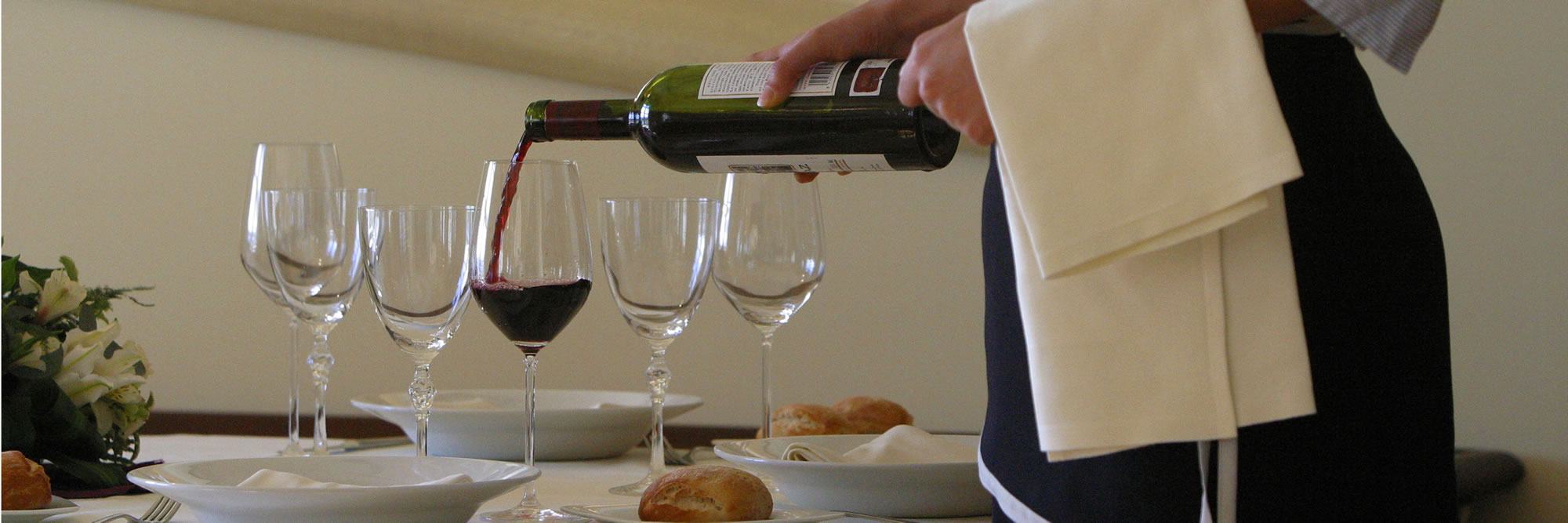
![]() International Gastronomic Tourist Destination
International Gastronomic Tourist Destination
DISCOVER THE FIVE REGIONS OF DESTINATION
What to see in La Rioja Alavesa
La Rioja Alavesa is the ideal destination for a wine tourism trip, enjoy impossible landscapes of vineyards and medieval villages nestled between the Basque Country, Navarra and La Rioja. These are the undisputed protagonists of one of the most famous wine routes in Spain, competing directly with Olite, in Navarre.
La Rioja Alavesa is a magical place, full of extraordinary corners that you will discover once you get there for the first time, enjoying and breathing the uniqueness of a place only found in this region of Spain, a country where beauty is everywhere, being able to absorb all of what Spanish culture can offer you.
There are 21 villages that make up this region, this being: Labraza, Kripán, Moreda de Álava, Villabuena de Álava, Baños de Ebro, Elvillar de Álava, Elciego, Laserna, Lapuebla de Labarca, Leza, Lanciego, Laguardia, Yécora, Samaniego, Páganos, Navaridas, Oyón, Salinillas de Buradón, Labastida, Viñaspre, and Barriobusto.
Now that that’s being said, let’s explore what to see in La Rioja Alavesa.
The capital of Laguardia
This small town in Alava is a real delight for the senses. Strolling through its medieval streets, you will get to know its walls by entering its churches or knowing its people, which is the real pleasure for those who come to Laguardia, capital of the Rioja Alavesa.
Its medieval essence is breathed in every corner, but, without any doubt, the church of Santa María de los Reyes and, especially, its portico, are authentic treasures.
With its door of pointed arches, said church maintains the original polychrome, built in carved stone in the late fourteenth century and painted only twice throughout its history. Although it has not been restored since the seventeenth century, this portico is a well-kept jewel of Laguardia, making the town even more unique.
Also, in addition to getting to know this town, visiting the wineries of Laguardia is an essential part of any wine route in the whole of Spain. From wineries full of tradition and beauty such as El Fabulista, 7 meters deep and constructed under a 17th century palace.
These wineries were build with modern and avant-garde architecture, such as the Ysios winery, designed by Santiago Calatrava, a famous personality, not only in Spain, but in all the world, being a renown architect, specialist in bridges and towers.
All of this being said, we suggest that you take a guided tour of Laguardia and book a visit to the Campillo wineries or the Solar de Samaniego wineries.
If you cannot go on your own to the capital of the Rioja Alavesa, a good option is to make an excursion to Laguardia and two wineries of the Rioja Alavesa leaving from San Sebastián in a bus or taxi. In any case, the town is a must in any guide to visit the Rioja Alavesa.
Elciego and the Marqués de Riscal Hotel
If Laguardia is the most beautiful town to see in La Rioja Alavesa, Elciego is not far behind in said beauty. This is, without a doubt, one of the most charming villages in the area.
What will amaze you the most in Elciego is the contrast between the small medieval village and some buildings that give it a more modern point of view, symbolizing the transition between old and modern times.
For example, the Marqués de Riscal Hotel is very reminiscent of The Guggenheim in Bilbao. This building is the work of Frank Gehry, the same architect who designed the Guggenheim in Bilbao or the Dancing House in Prague, among other works.
The Hotel Marqués de Riscal is a five-star hotel full of luxury. A great hotel where people can stay for the modest price of about 500 bucks a night. It has a wine spa, grape-based treatments and even a Michelin-starred restaurant. There is no doubt that this is one of the most original hotels in Spain, and the most expensive one too.
Spending a night here is a luxury, that is obvious. But the thing is that there is even a heliport built in the area, so you can land your private plane near the hotel and thus go as unnoticed as possible. Apparently, famous actors such as Brad Pitt and Angelina Jolie or even the King Emeritus have passed through it.
The Town of Labraza
If you are in love of the Middle Ages, you will be pleased to know that Labraza is the smallest fortified village in the Basque Country, and one of the best preserved in the world. In fact, in 2008, it was awarded the World Walled Cities Award.
To visit this time travel town, the best way to get there is through the village of Bernedo in the Alavese Mountains. The village is located at an altitude of 677 meters above sea level, and belongs to the municipality of Oyón.
You will go bananas with its streets, its small squares, its narrow streets, its passages and cellars that are still in the subsoil of the village… A collection of unique vistas and travelling to those times of old where the Spanish church was in control of everything.
As you can see, many of the houses belonging to the villagers and farmers are part of the wall itself, which highlights its battlements, their four towers, a well of fresh water, secret tunnels together with walkways and passages.
We recommend you visit the village fountain, one that was build in the sixteenth century. This monument is also known as la Fuente del Moro, in which its spout stands out for the decoration that has a Gothic trace. The reason because the word Moro (Saracen) is used is for the simple reason of the Arab heritage from the Middle Ages.
If you like hiking, you can also visit La Nevera de las Llanas, which is located at 910 meters above sea level, near the border with Navarre, where there is a very well-preserved refrigerator, with more than 9 meters high.

